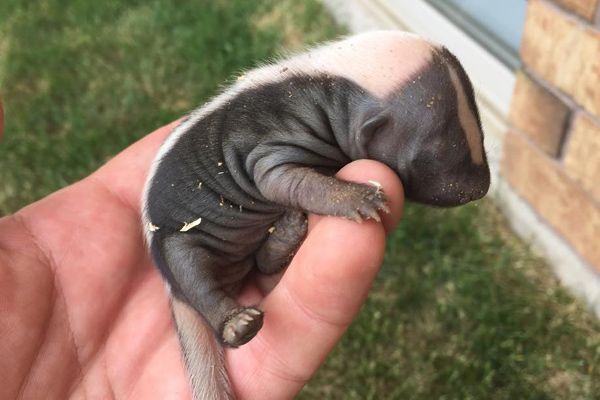If there is an animal that is more famous for its smell than for its appearance, then the skunk is certainly that animal. Although it is well known for the distinct odor produced by the scent glands, there is in fact much more than just an ability to create a foul odor. The skunk can often be a very attractive animal to see, and is native to the American continent.
Biology And Appearance:
The traditional image of the skunk that people will normally think of is the striped skunk, which has two distinct white stripes of fur running down the body. There are also other markings that a skunk may carry, which include the spotted skunk which doesn’t have the distinctive striping. Some skunks may actually brown, gray or even a cream color rather than the typical black and white.
They will usually grow up to three feet in length, and have larger and more powerful hind legs. The most distinctive biological aspect of the skunk is the secretion that is produced in the anal scent gland, and is an important defense mechanism that can ward off many predators. The spray can be expelled forcefully to hit a target up to three meters away, and can be detected up to a mile away by the relatively poor sense of smell of a human.
 Behavior And Life Cycle:
Behavior And Life Cycle:
For the most part skunks are solitary animals that will only interact during the mating season. The skunk will make burrows that they use for shelter, and in particularly cold areas there are instances of skunks coming together to share body heat. Although they are not animals that go into a full hibernation, they will sleep for much longer periods and will eat less.
The life span of the skunk is usually quite short due to their vulnerability to predators that can get past the odor defense mechanism. The majority will rarely live beyond three years, but there are some cases of skunks surviving in the wild up to fifteen years of age. Skunks will usually mate in the spring, and males will often share their seed with more than one female. A gestation period of around 9 weeks will usually see the female give birth to a relatively large litter of up to seven young, that will stay with the mother until they are around a year old.
Habitat And Diet:
The skunk is an adaptable animal which will often live in grasslands, woodlands and even farmland where it is able to burrow a den. These dens will often be quite deep, and as they are nocturnal animals they will normally spend most of the day in their den.
Skunks are omnivorous animals and will usually look for smaller animals, but they will also eat carrion if they find it. Their main source of food is insects and other small animals, but they will also eat moles, snakes and even birds if they can catch them. As well as eating grasses and other plant life, the skunk is also known to eat bees.
Skunks can be problematic if they move into urban areas, as they will often come into contact with domestic animals such as cats, and are known to adapt their diet to scavenge through garbage and even eat carcasses left by other animals.
Conclusion:
The skunk is an animal that has often been portrayed in a negative light, and their contact with humans has led many people to consider them pests. They are however a fascinating species, and are almost unique in the animal kingdom because of their very individual genetic makeup.
Go back to the
How To Get Rid of Skunks home page.